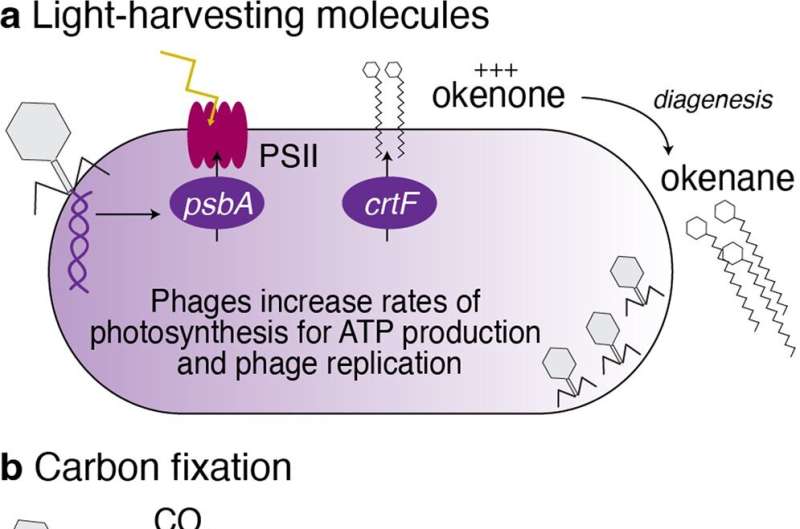This article has been reviewed according to Science X's editorial process and policies. Editors have highlighted the following attributes while ensuring the content's credibility:
fact-checked
peer-reviewed publication
trusted source
proofread
Researchers make groundbreaking bacterial discovery in a Washington lake

Billions of years ago, Earth was a different place. Intense volcanism, meteorite impacts, and toxic gases like methane made it hostile to modern life. Most notably, it lacked the oxygen-rich environment that makes our planet as luscious and green as it is today. Within it, photosynthetic bacteria, such as purple (PSB) and green (GSB) sulfur bacteria, thrived, playing a vital role in producing organic matter through photosynthesis.
In a recent work published in Communications Earth & Environment, Dr. William Gilhooly III, professor of Earth Sciences at the IUPUI School of Science, and a team of researchers made a trip to northeast Washington to study PSB and GSB within oxygen deficient lakes, where these bacteria mostly reside. What they discovered could rewrite the history of anoxic bacteria and play a key role in understanding what's affecting modern lake ecology.
Traditionally, geologists believed purple bacteria need more sunlight, and struggle to tolerate excess hydrogen sulfide, directing them more toward the surface. Green bacteria is the opposite, needing less sunlight, but can tolerate more hydrogen sulfide, pushing them below purple bacteria.
However, the bacteria in these Washington lakes didn't live according to these rules. Sometimes they were mixed, other times only one bacterium dominated. So, the group tested a theory posed by lead-author Alice Bosco-Santos of the University of Lausanne, Switzerland: What if the bacteria had a viral infection?
Sure enough, they did.
"All had genes in their metagenome that come from viruses," Gilhooly said. "The viruses are going into the bacteria, tinkering with the genetic code, and getting the bacteria to make things for them. It changes things because in the past we'd see a bunch of PSB and they're producing lots of chlorophyll, which gives them the purple color. Now, knowing that there can be infections, it could be the viruses that are driving them to do these kinds of things. This means that in addition to environment and climate, hidden biological factors may influence the activity of living things."
The successful findings, while reshaping the way scientists look at bacteria such as purple and green bacteria, raise more questions for the team to discover. How long have viruses changed these bacteria? What other bacteria might be affected by viral infection? What is the impact, positive or negative, of infection?
More importantly, how does it translate to our daily lives? Gilhooly's belief is that the viral infections might be present in more than just PSB. Problematic bacterium like cyanobacteria could be under viral command as well. Thus, knowing what's at play is the first step in solving issues relating to water quality.
"It could have important relevance for modern lakes, or even Eagle Creek Reservoir (Indianapolis), what are the things controlling it?" Gilhooly said. "If you take northeast Indiana for example, lakes up there, it's known that cyanobacteria blooms are a huge nuisance and can be toxic to animals. If PSB and GSB are affected by viral infection, then more than likely there are other aquatic bacteria that are being affected by viral infections."
More information: Poppy J. Hesketh-Best et al, Viruses of sulfur oxidizing phototrophs encode genes for pigment, carbon, and sulfur metabolisms, Communications Earth & Environment (2023). DOI: 10.1038/s43247-023-00796-4
Journal information: Communications Earth & Environment




















